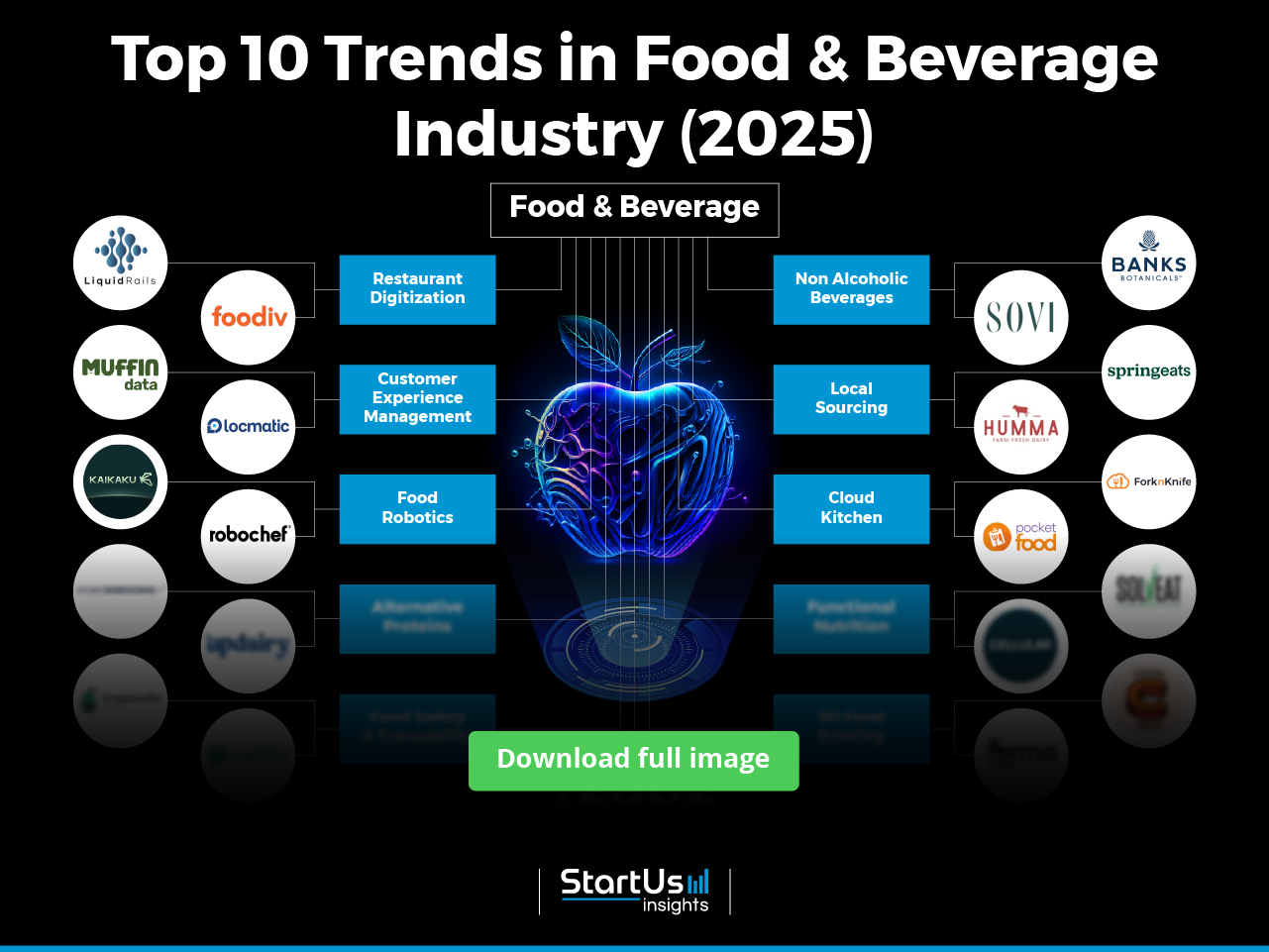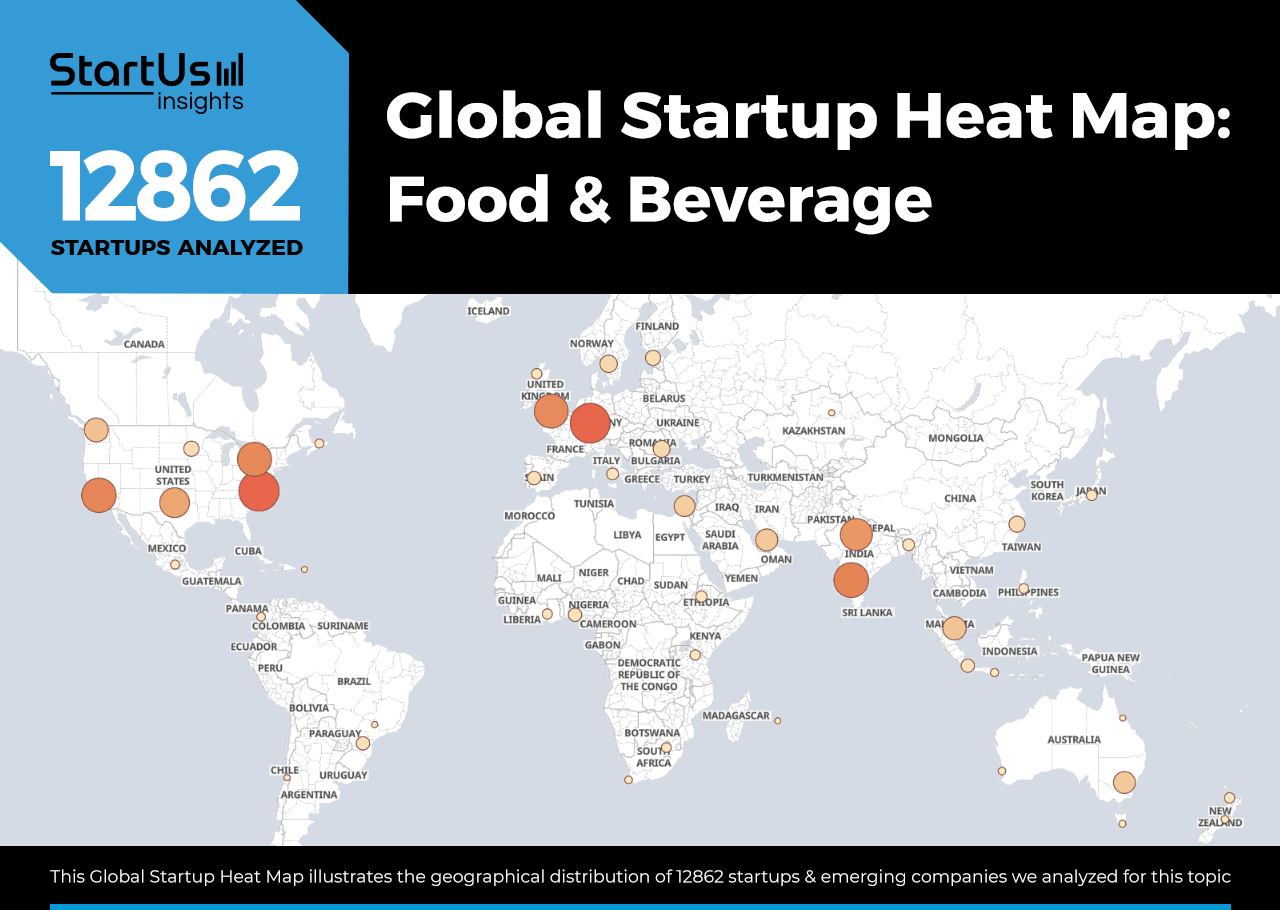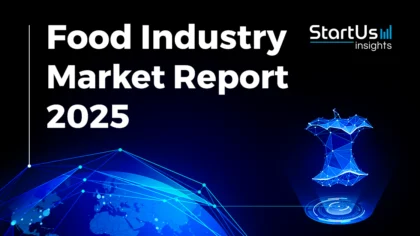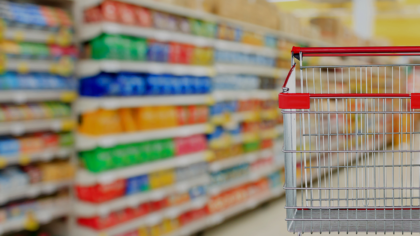Food and beverages are one of the most dynamic industries. Today, most of the innovations in the food and beverage industry are about improving convenience and integrating sustainability in every step. For example, measures like alternative proteins and eco-friendly packaging are improving sustainability and food robotics is improving the convenience of production. Additionally, the increasing uncertainties like geographical division, political uncertainties, and social inequality have given rise to a scarcity of food in many parts of the world. In such scenarios, 3D printing is making sure of distributed food production for everyone. However, the food and beverage industry is set to see more developments with people becoming more mindful of what they consume and how that food is being manufactured.
Top 10 Trends in Food and Beverage Industry
- Restaurant Digitization
- Customer Experience Management
- Food Robotics
- Non Alcoholic Beverages
- Alternative Proteins
- Local Sourcing
- Cloud Kitchen
- Food Safety and Traceability
- Functional Nutrition
- 3D Food Printing
Innovation Map outlines the Top 10 Food and Beverage Trends & 10 Promising Startups
For this in-depth research on the Top 10 Trends & Startups, we analyzed a sample of 12000+ global startups & scaleups. This data-driven research provides innovation intelligence that helps you improve strategic decision-making by giving you an overview of emerging technologies in the food and beverage industry. In the Food and Beverage Innovation Map, you get a comprehensive overview of the innovation trends & startups that impact your company.
These insights are derived by working with our Big Data & Artificial Intelligence-powered StartUs Insights Discovery Platform, covering 4 760 120+ startups & scaleups globally. As the world’s largest resource for data on emerging companies, the SaaS platform enables you to identify relevant technologies and industry trends quickly & exhaustively.

Tree Map reveals the Impact of the Top Food and Beverage Trends
Based on the Food and Beverage Innovation Map, the TreeMap below illustrates the impact of the Top Food and Beverage Industry Trends. The tree map below illustrates the impact of the top 10 food and beverage trends. The trends in the industry are driven by the latest consumer and business preferences. While 3D printing is improving diverse and innovative food production, restaurant digitization is ensuring that businesses reach people beyond physical boundaries. Similarly, trends like local sourcing and alternative proteins are addressing consumers who are more mindful than before about what they consume and how they consume it. The treemap also reveals the popularity of robotics applications in the food and beverage industry along with the increased number of businesses who are taking food safety and transparency seriously in their operations.

Global Startup Heat Map covers 12800+ Startups & Scaleups
The Global Startup Heat Map below highlights the global distribution of the 12862 exemplary startups & scaleups that we analyzed for this research. Created through the StartUs Insights Discovery Platform, the Heat Map reveals high startup activity in the USA and Germany, followed by India.
Below, you get to meet 20 out of these 12862 promising startups & scaleups as well as the solutions they develop. These 20 startups are hand-picked based on criteria such as founding year, location, funding raised & more. Depending on your specific needs, your top picks might look entirely different.
Want to explore all food and beverage innovations & trends?
Top 10 Emerging Trends in the Food and Beverage Industry [2025 and Beyond]
1. Restaurant Digitization
The true benefit of restaurant digitization surfaced during the pandemic when people were confined to the digital world for everything. Restaurant owners are digitizing their businesses to expand beyond their physical presence and reach customers. They are using social media tools along with AR and VR to enable the kitchen display system (KDS). The KDS allows businesses to showcase their offerings to customers around the globe. The evolving digitization landscape has also led to improved collaboration among businesses, which presented some interesting food and beverage options for customers. In addition to getting global, digitization also improved customer experience with innovations like online ordering, cashless payment, table reservation system etc. Further, with the integration of the latest technologies like AI, cloud-based solutions, IoT, and others, the food and beverage industry is also improving inventory management.
LiquidRails enables Online Direct-to-Customer Alcohol Sales
USA-based startup LiquidRails offers an ecommerce SaaS platform for beverage alcohol brands. This software integrates into a brand’s website and enables direct-to-consumer (DTC) online sales. It also provides access to valuable first-party customer data for future marketing and growth. The beverage business receives ownership of customer data, compliance with e-commerce regulations, integration with existing websites, and turnkey shipping to up to 45 states. Thus, by using LiquidRails, brands boost DTC sales and increase brand awareness with campaigns that reach high-intent audiences.
Foodiv builds an Online Ordering Software
USA-based startup Foodiv offers online ordering software that can be integrated with the ordering system of any restaurant. The restaurant owners can register their restaurant name and email address, update the profile with essential details, create a comprehensive menu, and generate a QR code. The QR code allows the customers to view the menu directly on their mobile devices. This system supports various ordering methods, including phone, mobile app, and website ordering. The software provides an intuitive dashboard that is personalized specifically for your restaurant. The benefits of using these services are increased customer engagement and improved customer retention rates due to easy navigation.
2. Customer Experience Management
The F&B industry is bringing in newer innovations to satisfy their customers as they grow more conscious of sustainability, convenience, and smart choices. F&B businesses employ web analytics tools, personalization tools, and data analytics to record and track customer preferences and understand them better. To stay updated with the current customer expectations, F&B businesses are introducing convenient and eco-friendly delivery systems, omnichannel feedback systems, AI-powered personalized menus, and more. The industry is additionally using voice technology to improve the use of voice assistants for taking orders and answering customer questions. Further, strict hygiene protocols and transparent nutritional information are also impressing the customers.
Muffin Data offers an Analytics Tool for the Consumer Packaged Goods (CPG) Industry
Indian startup Muffin Data is an analytics platform designed for emerging CPG brands in the food and beverage industry. The platform provides new data-driven insights while automating data workflows to save time for CPG operators. The platform uses an advanced baselining algorithm that automatically detects incremental volume. This algorithm enables accurate measurement of organic demand, promotional lift, and unbiased forecasting.
It also standardizes product and location data, allowing for precise tracking of store-level activity. CPG operators also use the platform to analyze distribution center-level inventory counts and shipment fill rates to ensure operational efficiency. The platform retrieves point-of-sale (POS), shipment, and inventory data through various integrations. This data is then standardized into a normalized data warehouse tailored to the brand’s needs. The platform also provides standard analytics, with options for customization, detailed exploration, and data export.
Locmatic provides Food & Beverage Analytics
Nepalese startup Locmatic builds a platform that offers data-backed insights to analyze food and beverage trends and identify sales opportunities. The platform uses advanced AI and proprietary data curation technology to offer trend identification and insights into food and beverage industry. The menu intelligence provides insights into menu trends and ingredient analytics. These insights fill market gaps and develop fast-selling products. With marketing intelligence, users analyze SKU penetration rates, track trending flavors and ingredients, and benchmark competitors to inform strategic location and marketing plans.The sales intelligence of the platform further provides data from over 5 million restaurants across 30+ markets to pinpoint prospects and data-driven sales pitches for faster conversion.
3. Food Robotics
Robotics is assisting the food and beverage industry at all levels, starting from sourcing and producing to distributing and improving customer experience. Robots are used for automated harvesting, sorting, grading, and more. at the production level. These robots use AI for decision making, computer vision for visual inspection, advanced grippers to handle delicate food items, and machine learning to improve performance over time. Food robotics also automates a wide range of operations like preparing and packaging at the inventory level.
This automation improves food safety by reducing human intervention and optimizing quality control. It also makes the operation efficient by speeding up the process and addressing labor shortages and high expenses. Innovations like autonomous delivery vehicles, drones, and restaurant-to-table robots are optimizing delivery options. In restaurants, self-serving kiosks, robot baristas, and bartenders are also ensuring a high level of precision in food preparation and services. Additionally, commercial kitchen automation employs robots for repetitive tasks like chopping vegetables, flipping burgers, placing toppings on pizzas, etc.
Kaikaku builds an AI-powered Restaurant Chain
UK-based startup Kaikaku builds a specialized robot for food assembling called Fusion. Using parallel dispensing and food cartridge technology, the robot precisely portion and refill ingredients. It is fully modular and can assemble 10 ingredients of choice efficiently. Fusion also performs 3D printing prototyping and live restaurant field testing for delivering fast iterations. For convenience, Kaikaku uses a cloud architecture to run and manage Fusion.
RoboChef simplifies Automated Kitchen Operations
USA-based startup Robochef provides a fully integrated food service automation system. The automation systems include a SmartKiosk, SmartFryer, and SmartLine. All the products are made of food-safe stainless steel, is easy to clean, and complies with food-safe robotics. The design is intuitive and user-friendly. All of them support remote monitoring and support and can be integrated with the existing kitchen display system or point of sale.
4. Non-Alcoholic Beverages
The non-alcoholic beverage option stands out because of its zero alcohol content, health benefits, flavor profiles, and the effect it has on social dynamics. Food and beverage industry utilizes technologies like advanced fermentation, cold extraction, vacuum distillation, and microencapsulation to ensure mass production of quality non-alcoholic beverages. These technologies also provide ready-to-drink (RTD) products and low/ no sugar options. Additionally, the businesses are making sure of sustainable sourcing of healthy ingredients (like plant-based flavors) for the production and eco-friendly packaging for distribution.
Banks Botanicals produces Non-alcoholic Spirits
Australian startup Banks Botanicals brews non-alcoholic spirits. The distillation process begins by filling the still with water and heating the botanicals at different temperatures based on their type. Some botanicals are placed in copper baskets for distillation. As the water heats, vapors pass through the botanicals, extracting their aromas. For lime, vapor infusion is used. The vapor then moves to the condensing column, where copper cools it, transforming the vapor into a flavor-infused liquid. Finally, the individually distilled liquids are blended to create the final spirit.
Sovi brews Non-alcoholic Wine
USA-based startup Sovi offers non-alcoholic wine. The wine is crafted using herbicide-free farming, with no added sugar or artificial ingredients. Most of the wines are blends of several grape varieties, carefully chosen to create a balanced structure, rich character, and appealing aroma. The production process involves vacuum distillation or spinning cone technology, which removes alcohol by boiling the wine off at a low temperature using vacuum-assisted centrifugal force. The final product contains less than 0.5% alcohol by volume.
5. Alternative Proteins
Alternative proteins are the result of the growing conscious and sustainable mindset of the consumers and the producers. Popular alternative proteins include plant-based food, dairy alternatives like soy milk and almond milk, and meat substitutes like cultured and lab-grown meat. It also includes insect-based protein, microbial and fermentation-based protein, and more. Processes like 3D printing and precision fermentation further accelerate the development of alternative proteins. It is becoming a popular option as it ensures the availability of a variety of options, precise integration of nutritional values, and alignment with climate crisis reductions.
Moreshroom formulates Carbon-negative Mycoprotein
Norwegian startup Moreshrooms produces carbon-negative mycoprotein, which is a protein source created through the fermentation of fungi. The production process relies on mycelium, a network of fine, thread-like structures produced by fungi, which forms the foundation of mycoprotein. A key element in this process is seaweed. This seaweed, which is a renewable marine resource, serves as the natural food for fungi during fermentation. This alternate protein does not rely on arable land for growing. It provides a versatile, nutrient-rich, and eco-friendly alternative for various food products.
Updairy produces Animal-free Dairy Products
Updairy, based in Brazil, uses biotech and microorganisms to produce animal-free dairy proteins. The operation starts with copying the cow’s gene into the fungi. The fungi are grown into the bioreactor while creating dairy proteins. The resulting dairy product can be used in bakery, confectionery, supplements, beverages, and more.
6. Local Sourcing
Local sourcing addresses critical issues of food safety, environmental sustainability, nutritional quality, and economic viability for farmers. Community-supported agriculture programs (CSA) connect consumers directly to the local farmers, which ensures local sourcing of the farmed products. A lot of mobile applications by startups are also working towards making locally sourced food available to a larger customer base by connecting customers directly to the farmers.
Additionally, food hubs enable centralized facilities to manage the aggregation, distribution, and marketing of locally sourced food products. Further, farm-to-table restaurants employ vertical farming and hydroponics to grow crops sustainably. They use these crops for preparing dishes that they serve to the customers. This trend has also led to the rise of craft breweries and distilleries, artisanal food products, seasonal menus, etc.
SpringEats facilitates Farm-to-Table Groceries
USA-based startup Springeats offers a waste-free delivery platform for farm-to-table groceries, using reusable, returnable, and refillable packaging. Once the order is delivered, the empty containers are picked up the next day from the doorstep. The circular system assists small businesses, farmers, and producers adopt waste-free models while promoting sustainability. Customers also track their environmental impact through a personalized, real-time climate dashboard.
Humma offers Farm-to-table Dairy Product Delivery
Indian startup Humma provides a subscription-based app that provides dairy milk fresh from the farm to its users. Each of the cows is RFID-tagged, which tracks detailed health records and monitors their well-being. After milking, the milk is immediately chilled to below 4°C and pasteurized at 72°C. This process quickly eliminates bacteria and is essential for maintaining the quality and taste of the milk. Additionally, Humma makes sure to use sustainable farming practices and provide ongoing support to its farmers to ensure both organic and financial sustainability.
7. Cloud Kitchen
By focusing on delivery and takeout without the constraints of traditional restaurant operations, cloud kitchens offer a flexible and cost-effective ordering solution to customers. It enables delivery only to restaurants, virtual food halls, and multiple restaurants functioning in one space. Cloud kitchens additionally address numerous challenges like high overhead costs, food waste, changing customer preferences, decreasing land space, and more.
F&B businesses are using technologies like artificial intelligence and data analytics to understand customer preferences and business models around cloud kitchens. Further, applications like kitchen display systems, robotic automation, and online ordering platforms keep cloud kitchens ahead in the food and beverage industry.
ForknKnife advances Cooking-as-a-Service
Turkish startup ForknKnife is a tech-driven cloud kitchen solution designed for brand owners to expand their delivery services with zero investment cost. Through its Cooking-as-a-Service (CaaS) platform, it allows restaurants to establish delivery-only locations at minimal expense. The process begins with a team visit to evaluate the kitchen’s infrastructure, equipment, staff, and location. Following the evaluation, a detailed report is provided outlining the brands that are eligible to use the space for kitchen operations. An operations guide and cooking procedures are then delivered, followed by the supply of products and materials necessary for operation.
Pocketfood provides Personalized Nutrition
Nigerian startup Pocketfood is a cloud-kitchen platform that offers personalized nutrition to its users. The users put their dietary preferences and health goals and AI generates a custom meal plan tailored to specific nutritional needs. Users subscribe to weekly or monthly plans. Beyond meal planning, users use Pockefood for last-minute orders as well. Users have the option to order individual meals from nearby restaurants at any time and have them delivered quickly.
8. Food Safety & Traceability
With increased adulterations and decreased consumer trust, it has become essential for food and beverage industries to comply with food safety and transparency standards. F&B businesses use technologies like blockchain to build decentralized platforms. It makes the ingredients and the lifecycle of the food transparent to the consumers as well as other stakeholders. Further, IoT devices and sensors ensure that optimum conditions are maintained in the warehouse facility and during the delivery process.
Further, several regulatory compliances like hazard analysis and critical control points (HACCP), global food safety initiative (GFSI), FDA, etc. ensure food safety by introducing preventative measures during the production, processing, and distribution of food. F&B businesses strictly comply with these standards to prevent any foodborne illness. Adhering to food safety standards additionally decreases the chances of product recall or failure and saves the money involved in it.
Inspectle Food builds Food Hygiene Inspection Software
Estonian startup Inspectle Food develops AI-powered food inspection software to streamline safety processes. The system begins with root cause analysis, where users click a picture of a non-conformity and AI analyzes it. The software also assigns issues and offers corrective action suggestions automatically. It replaces paperwork, improves communication, and accelerates workflows.
Caddy offers an Inventory and Traceability Software
Canadian startup Caddy develops inventory and traceability software for food manufacturers that provides real-time visibility into stock levels for raw materials, packaging, batches, and finished products. It optimizes inventory management by using first-in/first-out or first-expired/first-out methods, reducing carrying costs, and offering low stock alerts to prevent shortages. The software also allows users to run detailed reports on forms, users, and associated inputs or materials, ensuring oversight of the entire inventory process. Users create multiple product logs and access it on multiple devices. The logs are time-stamped for everyone to stay updated with the compliance.
9. Functional Nutrition
Functional nutrition is becoming a popular means for boosting immunity, managing weight, improving gut health, cognitive health, and heart health. It also enables the production of fortified foods and beverages, which are enriched with vitamins, minerals, probiotics, fiber, etc. Functional nutrition also aligns with the modern lifestyle. To keep up with this rising popularity, F&B businesses are focusing on building customized functional products that cater to unique dietary preferences, allergies, or health concerns.
They are employing technologies like encapsulation, precision fermentation, high-pressure processing, and ultrasound-assisted extraction to integrate functional nutritional aspects into the current food and beverage market. Further, AI and machine learning are bringing newer product formulations by analyzing vast datasets of ingredients and their properties.
Solveat makes Bio-active Functional Ingredients
Israeli startup Solveat improves food products with clinically proven herbal bioactive compositions that target specific health conditions. The food tech platform performs scientific research using pharmacological modeling to highlight synergies between herbal extracts. It also provides quality product design that uses active ingredients to benefit the body and a microencapsulation food delivery system. This plug-and-play solution integrates into product formulations, improving items like chocolate, snacks, and beverages. It particularly benefits individuals with pre-diabetes.
Cellular Farms creates Natural Drug Molecules
USA-based startup Cellular Farms produces plant-based ingredients through vertical farming. The company specializes in growing whole plant ingredients as food-as-medicine, which offers customized solutions to meet specific nutritional or molecular needs. The process involves identifying plants with target molecules, growing them in controlled indoor environments, and providing scalable, clean, plant-based ingredients. It is suitable for various industries like nutritional supplements and packaged foods.
10. 3D Food Printing
3D printing facilitates quick and cost-effective production of food. It enables customized production of food type and amount, which reduces unnecessary production and waste. Additionally, in areas where certain ingredients are difficult to produce organically, 3D printing is employed to produce them. One example is the production of plant-based protein production. It also creates specialized food like the ones used in personalized nutrition or the ones astronauts carry in space. Technologies like extrusion-based printing use food-grade syringes to deposit material layer by layer and produce any customized food. Such technologies assist in texture modification as well.
Cocoa Press makes 3D Chocolate Printer Kits
USA-based startup Cocoa Press offers a 3D chocolate printer kit that allows personalized, intricate chocolate designs beyond what traditional methods achieve. The process requires loading the chocolate into the printer and preheating it for about 15 minutes. Next, users browse Cocoa Press’s design library to find a design online, or even create a new design. Using PrusaSlicer software, users slice the design into printable layers. Finally, the chocolate layer is printed and ready to be used.
Forma Foods offers 3D-printed Plant-based Protein
Mexican startup Forma Foods produces 3D-printed, cow-less carne asada. It uses a 3D printer to replicate the texture of meat by mimicking muscle fibers precisely. The company further creates a macrostructure that resembles the traditional muscles’ texture and appearance by controlling the microstructure.
Discover all Food and Beverage Trends, Technologies & Startups
Food and beverage industry continues to evolve, driven by consumer demand for health-conscious, sustainable, and innovative options. Plant-based products, functional foods, and clean labels are becoming mainstream, while sustainability and eco-friendly packaging are shaping purchasing decisions. Additionally, technology is revolutionizing how people experience food with trends like personalized nutrition and food delivery innovations. As consumers seek convenience without compromising quality or values, the industry continues to adapt to these shifts. The future of food and beverages promises both innovation and mindful consumption as the industry becomes more responsive to emerging preferences of consumers and global concerns.
The Food and Beverage Trends & Startups outlined in this report only scratch the surface of trends that we identified during our data-driven innovation & startup scouting process. Identifying new opportunities & emerging technologies to implement into your business goes a long way in gaining a competitive advantage.
![Food and Beverage Industry: Top 10 Technology Trends [2025 & Beyond]](https://www.startus-insights.com/wp-content/uploads/2024/11/Food-and-Beverage-Industry-Trends-SharedImg-StartUs-Insights-noresize-420x236.webp)










